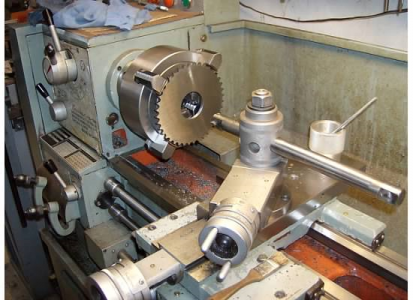- Joined
- Jun 7, 2013
- Messages
- 10,450
I did not post any pictures of a lathe, and where did the discussion of boring sprockets come from? As to boring sprockets, one must, of course line up to the pitch diameter of the teeth, which should be the same and concentric with the OD of the teeth; many times this is not so easy with, especially a plate type sprocket with no hub; if it has a hup, the hub is likely concentric with the PD and OD of the sprocket, and likely if the sprocket has an existing bore, it can be used to indicate in the sprocket in the lathe chuck. Chucking the OD of a sprocket can be problematic, such as with a plate sprocket with no hub, but this can be accomplished by making a "pot chuck", a ring that has a shoulder in the ID and fits closely on the sprocket OD and is machined concentric in the chuck it is to be held in; after machining it, it is split with a saw cut on one side and acts as a collet to chuck a sprocket without damaging the teeth.

